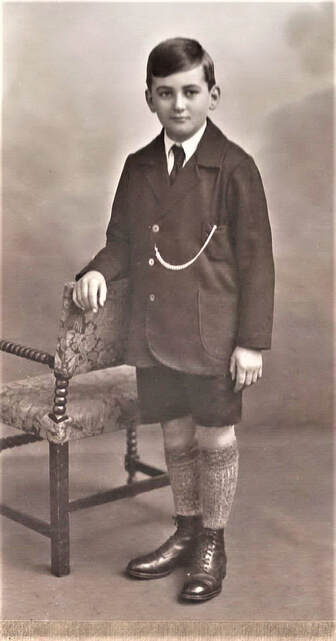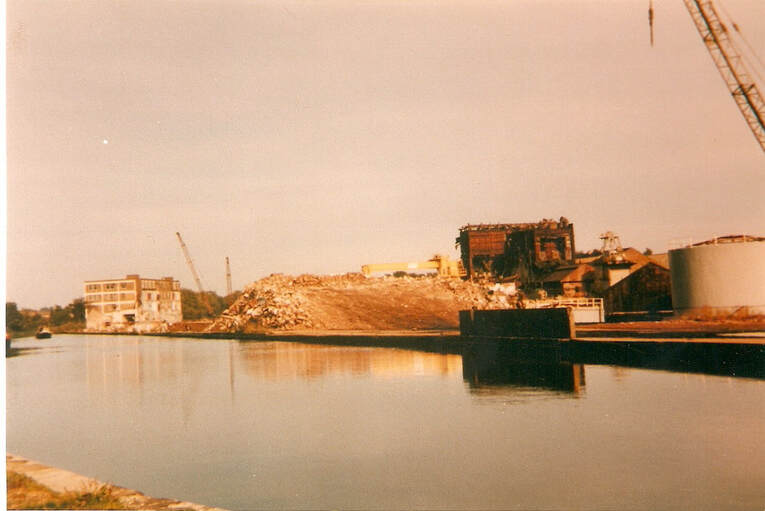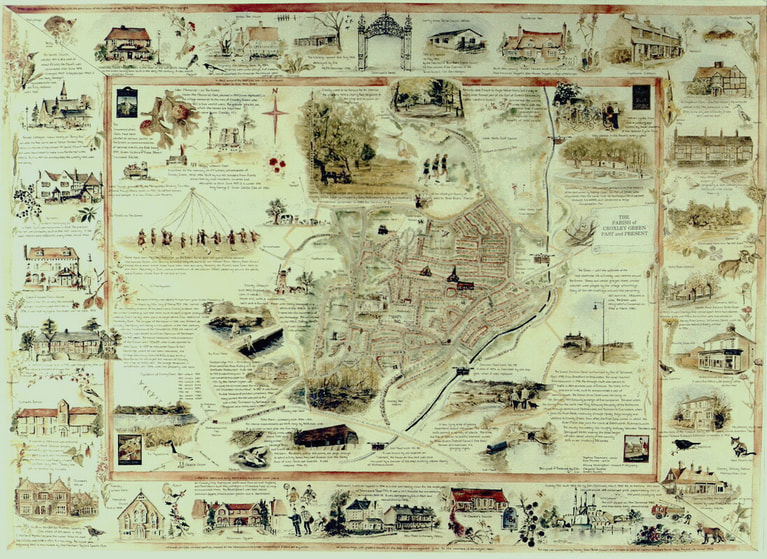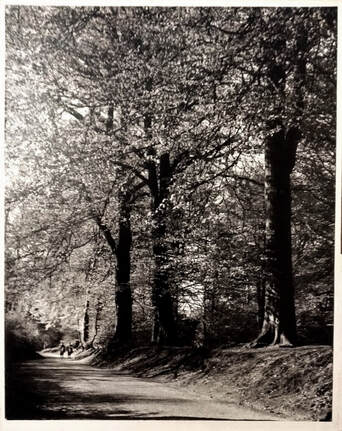Harry (Edgar) Packman 1917-1994
Harry Edgar’s parents were Harry Packman and Winifred Jessie (nee Tibbles). His father Harry was born in 1886 in Boughton Aluph near Kennington, Ashford, Kent, to Thomas and Lucy Ann Packman (nee Pidduck) where they had a basket making business.
The family moved to Spinners Farm, Worth, near Sandwich, by 1901, and 15 year old Harry was a Telegraph messenger boy. The 1911 census shows that he had progressed to become a Rural Postman and had moved to Eastry, Kent as a lodger.
Harry Edgar’s parents were Harry Packman and Winifred Jessie (nee Tibbles).
The family moved to Spinners Farm, Worth, near Sandwich, by 1901, and 15 year old Harry was a Telegraph messenger boy. The 1911 census shows that he had progressed to become a Rural Postman and had moved to Eastry, Kent as a lodger.
Harry Edgar’s parents were Harry Packman and Winifred Jessie (nee Tibbles).
Winifred’s parents, John Henry and Mary Elizabeth Tibbles, were married at St Mary’s Church, Watford and lived in Queens Avenue, Watford. The family decided to emigrate to Australia and boarded the SS Orsova on the 12th May 1911. The Orsova was a steam ocean liner owned by the Orient Steam Navigation Company that had been built just two years earlier in 1909, purposely for their Great Britain-to-Australia services via the Suez Canal. The outgoing passenger list shows John, Mary and Winifred were travelling 3rd class. They embarked at London and disembarked at Fremantle near Perth on the west coast of Australia on the 13th June 1911. John’s occupation was listed as Market Gardener.
Many British people took advantage of assisted emigration passages. With high unemployment in Britain at the time, many people saw migration to Australia as a chance for a better life. The most common route to Australia from Britain and Europe was via the Suez Canal, which shortened the journey. Stopovers were at Port Said in Egypt, Port Aden (now Yemen), and then via the Arabian Sea to Bombay and Colombo in Sri Lanka (formerly Ceylon). From there the route continued across the Indian Ocean to the Western Australian port of Fremantle.
Coincidently, Harry Packman also made a similar decision to emigrate and boarded the exact same ship with the intention of disembarking at Sydney, on the East Coast of Australia. However, at some point he had a change of plan and also disembarked at Fremantle on the 13th June 1911. His occupation was listed as Postman.
Whilst in Australia, (or maybe on board the ship?), Harry met Winifred and they married in 1916 in Subiaco, a suburb of Perth. Their son Harry Edgar was born the following year on the 16th August 1917 in Geraldton, Western Australia, approximately 230 miles north of Perth. A family photograph taken in Australia with Harry and his son Harry Edgar shows him holding a huge bunch of grapes weighing 4 ¾ Ibs. On the reverse of the image the message says ‘Grown by J Tibbles W. Subiaco and this suggests that Harry Edgar’s grandfather continued his occupation as a Market Gardener on his arrival in Australia.
Many British people took advantage of assisted emigration passages. With high unemployment in Britain at the time, many people saw migration to Australia as a chance for a better life. The most common route to Australia from Britain and Europe was via the Suez Canal, which shortened the journey. Stopovers were at Port Said in Egypt, Port Aden (now Yemen), and then via the Arabian Sea to Bombay and Colombo in Sri Lanka (formerly Ceylon). From there the route continued across the Indian Ocean to the Western Australian port of Fremantle.
Coincidently, Harry Packman also made a similar decision to emigrate and boarded the exact same ship with the intention of disembarking at Sydney, on the East Coast of Australia. However, at some point he had a change of plan and also disembarked at Fremantle on the 13th June 1911. His occupation was listed as Postman.
Whilst in Australia, (or maybe on board the ship?), Harry met Winifred and they married in 1916 in Subiaco, a suburb of Perth. Their son Harry Edgar was born the following year on the 16th August 1917 in Geraldton, Western Australia, approximately 230 miles north of Perth. A family photograph taken in Australia with Harry and his son Harry Edgar shows him holding a huge bunch of grapes weighing 4 ¾ Ibs. On the reverse of the image the message says ‘Grown by J Tibbles W. Subiaco and this suggests that Harry Edgar’s grandfather continued his occupation as a Market Gardener on his arrival in Australia.
|
|
Winifred’s parents John and Mary Tibbles must have decided at some point to return home to England as they are shown in the 1921 census as visitors staying with John’s older brother William and his wife Minnie Tibbles and their two children Dorothy and Noel in the Whippendell Road, Watford. William had a Greengrocer business in the same road. John and Mary Tibbles decided to open a Fruit and Vegetable shop a short distance away in the same road.
Harry, then aged 36, Winifred aged 26 and their young son Harry Edgar aged 4 also decided to return to England and arrived back in London on 2nd May 1922 having travelled on the SS Orvieto. It is believed that the voyage home included a stopover in India. While there Harry and Winifred bought many items, including jewellery and seeds. In particular seeds for the Indian Bean Tree were purchased.
On their return to England Harry Edgar remembers staying with his grandparents at the greengrocer’s shop for a short while before his family moved into Harwoods Road. Harry, now of school age, initially went to the Central School in Watford town centre.
Harry, then aged 36, Winifred aged 26 and their young son Harry Edgar aged 4 also decided to return to England and arrived back in London on 2nd May 1922 having travelled on the SS Orvieto. It is believed that the voyage home included a stopover in India. While there Harry and Winifred bought many items, including jewellery and seeds. In particular seeds for the Indian Bean Tree were purchased.
On their return to England Harry Edgar remembers staying with his grandparents at the greengrocer’s shop for a short while before his family moved into Harwoods Road. Harry, now of school age, initially went to the Central School in Watford town centre.
Croxley Green was experiencing a huge housing development and when the new houses on the estate belonging to Parrotts farm became available in 1934 Harry, Winifred and son Harry moved into Repton Way. It was here that Harry’s parents planted a seed of the Bean Tree immediately outside the rear of the house. It grew into a magnificent specimen producing spectacular blossoms and long pods resembling bean pods.
Living in Croxley Green as a youth and teenager the countryside was Harry’s new playground and along with other village boys he enjoyed the Common Moor area and Long Valley Woods. At this time the gravel plant on the edge of the canal was still in operation. After the gravel extractions from the dry pits in the woods had been exhausted the plant was still used for washing and grading the gravel from the Rickmansworth area now known as The Aquadrome. The gravel would arrive from Rickmansworth in large open barges and be loaded into wooden trucks on a railway system. The gravel would then be processed in the washing and grading plant into sand and various sizes of hoggin. When the workers had finished for the day Harry and his pals would take the opportunity to push the wooden trucks over the railway system, rearranging them for fun!
The 1939 register shows the family settled, and Harry now aged 23 was listed as a skilled workman for the Post Office, an Engineer in Telecommunications as an Adjuster & Installer.
Living in Croxley Green as a youth and teenager the countryside was Harry’s new playground and along with other village boys he enjoyed the Common Moor area and Long Valley Woods. At this time the gravel plant on the edge of the canal was still in operation. After the gravel extractions from the dry pits in the woods had been exhausted the plant was still used for washing and grading the gravel from the Rickmansworth area now known as The Aquadrome. The gravel would arrive from Rickmansworth in large open barges and be loaded into wooden trucks on a railway system. The gravel would then be processed in the washing and grading plant into sand and various sizes of hoggin. When the workers had finished for the day Harry and his pals would take the opportunity to push the wooden trucks over the railway system, rearranging them for fun!
The 1939 register shows the family settled, and Harry now aged 23 was listed as a skilled workman for the Post Office, an Engineer in Telecommunications as an Adjuster & Installer.
Sometime after the outbreak of WW2 Harry joined the Army but was transferred to the R.A.F. In a conversation with Harry regarding his role in WW2, this was a topic he was very hesitant to talk about. However, he did mention that he was involved in communications in the northernmost parts of Scotland. It was evident that the work came under Government security and possibly he had signed the Official Secrets Act. Many years later Harry’s mother did say to a neighbour that Harry and a colleague who visited their home were involved in war related work and Bletchley Park was mentioned. It is not unreasonable to wonder if Harry was setting up some form of communications between Scotland and Bletchley Park.
https://bletchleypark.org.uk/
After WW2 Harry continued his career with the Post Office Communications, following in his father’s footsteps, for Harry Snr. also worked for the Post Office before emigrating to Australia. His work took him to many parts of the U.K.
In his spare time Harry joined the committee of the local branch of the National Association of Boys’ Clubs in 1950, meeting in St. Oswald’s hall. The club had been set up in 1947 starting with a football club and then expanding to many other sports-associated events. Harry played a central role in the club for many years as well as becoming its secretary. In particular he encouraged starting a Cycle Section that was approved by the committee.
https://www.croxleygreenhistory.co.uk/youth-club.html
When the Croxley Camera Club was founded in 1960 initially by staff at the Dickinson Paper Mill, Harry became a keen member, winning in many categories for his works, both portraits and landscapes. As a keen photographer Harry had a ‘dark room’ installed in his home so he could develop and print his own images. He was on the Committee from 1972-4, Vice President 1981,and Treasurer in 1982.
https://bletchleypark.org.uk/
After WW2 Harry continued his career with the Post Office Communications, following in his father’s footsteps, for Harry Snr. also worked for the Post Office before emigrating to Australia. His work took him to many parts of the U.K.
In his spare time Harry joined the committee of the local branch of the National Association of Boys’ Clubs in 1950, meeting in St. Oswald’s hall. The club had been set up in 1947 starting with a football club and then expanding to many other sports-associated events. Harry played a central role in the club for many years as well as becoming its secretary. In particular he encouraged starting a Cycle Section that was approved by the committee.
https://www.croxleygreenhistory.co.uk/youth-club.html
When the Croxley Camera Club was founded in 1960 initially by staff at the Dickinson Paper Mill, Harry became a keen member, winning in many categories for his works, both portraits and landscapes. As a keen photographer Harry had a ‘dark room’ installed in his home so he could develop and print his own images. He was on the Committee from 1972-4, Vice President 1981,and Treasurer in 1982.
He was very interested in local history and copied many photographs, recording sites of historical importance. He produced a pictorial history of the Croxley Green John Dickinson Mill, on display boards for various events.
He became a member of the Rickmansworth Historical Society. Harry would also be happy to give talks on local history using his photograph collection transferring many to ‘slides’ and using a projector and mobile screen.
During the closure of the John Dickinson paper mill in December 1980, Harry and colleagues from the Camera Club spent many hours on the opposite bank of the canal photographing the demolition of the mill that had been part of the landscape since 1829, the employer of many local residents and the provider of the Institute/ Guildhouse.
He became a member of the Rickmansworth Historical Society. Harry would also be happy to give talks on local history using his photograph collection transferring many to ‘slides’ and using a projector and mobile screen.
During the closure of the John Dickinson paper mill in December 1980, Harry and colleagues from the Camera Club spent many hours on the opposite bank of the canal photographing the demolition of the mill that had been part of the landscape since 1829, the employer of many local residents and the provider of the Institute/ Guildhouse.
This was a sad occasion for the group, capturing this on a daily basis. One evening they noticed many skips piled high with filing cabinets. After the workmen had left the site, the group decided to investigate the contents of the filing cabinets. To their horror the cabinet drawers held years of valuable historical documents regarding the mill’s progress which were being carelessly disposed of. As a matter of urgency, the club members and others rescued these documents and waited for a decision as to what should be done with them. They carefully boxed the collection and made notes of the contents and were stored in Harry’s home. Some ten years later they were offered to the Hertfordshire Archives and Local Studies and collected by Kate Thompson the archivist between 1990-1993.
https://www.croxleygreenhistory.co.uk/john-dickinson.htm
Harry had a substantial personal collection of local images and this was used to create the Croxley Green Parish Map that went on sale in December 1993 and its design was copied county -wide.
https://www.croxleygreenhistory.co.uk/john-dickinson.htm
Harry had a substantial personal collection of local images and this was used to create the Croxley Green Parish Map that went on sale in December 1993 and its design was copied county -wide.
Harry passed away in 1994 age 76 years. His collection of local historical images can be seen in the local Library archives New Road Croxley Green.
The following are just a few of Harry’s early photographs submitted to the Camera Club’s Exhibitions
The following are just a few of Harry’s early photographs submitted to the Camera Club’s Exhibitions
Margaret J Pomfret May 2023
Information taken from
Harry Packman family photographs
Findmypast.co.uk
https://www.ancestry.co.uk/
www.myheritage.com
www.familysearch.org
Information taken from
Harry Packman family photographs
Findmypast.co.uk
https://www.ancestry.co.uk/
www.myheritage.com
www.familysearch.org




























